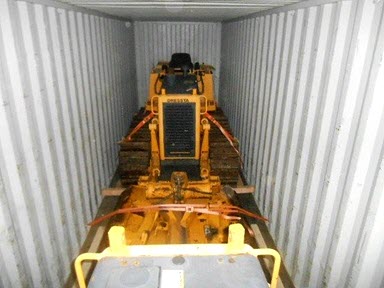Would you pay good money to transport empty space? No?
But that’s exactly what you do whenever you don’t load a container to full capacity.
Carriers charge by the box to move containerized freight. It makes no difference to a steamship line whether you squeeze all the cargo you possibly can into a container, or if you leave it one-third empty. The charge is the same.
To you, though, this makes a big difference. If a shipping line charges $3,000 to ship a 40-foot container from Port A to Port B, and you fill that container with 100 cases of a product, your cost is $30 per case. But if you can fit an extra 12 cases into the container and stay within container and over-the-road weight limits, your per-case cost goes down to $26.79.
Or to put it another way, you ship 12 extra cases for free.
Efficient container loading makes especially good sense when you ship many containers during the year. Say you need to move 10,000 cases at that $3,000 rate. At 100 units per container, you’d need 100 containers, for a total port-to-port cost of $300,000. But if you can get an extra 12 cases into each box, you’ll need just 89 containers. You’ve just cut your shipping cost by $33,000 — 11 percent.
How shippers underload containers
There are two ways a shipper can underload a container—by weight and by volume.
In our article on heavy freight shipping, we showed how it’s often possible—and perfectly legal—to transport up to 54,000 lbs. in an ocean container. Despite this, steamship lines often set an artificial weight limit for containers at around 44,000 lbs. Heeding that advice could mean paying much more than you should.
When it comes to underloading by volume, often the culprit is force of habit. You’re used to loading a certain way or using a certain kind of packaging. If you changed tactics, you might make better use of the available space. But if you’ve never explored the possibilities with a knowledgeable provider of NVOCC services, you have no idea what you’re missing.
Strategies to optimize container loading
How can you save money by making better use of container capacity? Here are a few tricks:
Adjust your packaging
Can you make your cases longer, taller or wider? If so, you might be able to get more product into each case and fit that increased volume into a single container.
Change how you order
Placing larger, less frequent orders with overseas suppliers might result in better space utilization.
Squeeze the air out
Shipping a load of basketballs? Deflate them first, and you’ll get a lot more into a carton. You can use the same trick with many other products. Buying a load of kitchen cabinets? You’ll get more of them in a container if they ship as “ready-to-assemble” or “knock-down” furniture, which ships in dense, flat boxes.
Turn oversized equipment into containerized cargo
When I.C.E. Transport ships heavy construction equipment, it often disassembles the machine so it fits in a container. Shipping a machine like this bulldozer in a container will save a shipper 50 percent or more on ocean transportation. There’s a cost for disassembly and reassembly, of course, but the shipper still comes out way ahead.

Use load optimization technology
If you don’t have software to achieve optimal container loads, work with a logistics partner like I.C.E. Transport that does. With stow planning software, you enter the weight and dimensions of each package. You also enter any restrictions, such as items that can’t be stacked, or packages you need to load with a certain end facing up. Based on this data, and the size of the container, the software produces several feasible loading plans, each with a diagram to show exactly where to place each piece, and where to block and brace the load.
Pack more in, but don’t make these mistakes
Strategic container loading can save you serious money, but only if you do it right. Watch out for costly mistakes, such as:
Faulty weight distribution
When your container goes onto an over-the-road chassis, you’re subject to DOT rules for weight on each axle. Load the container with those limits in mind, and block and brace so the load doesn’t shift.
Poor blocking and bracing
If you change your container loading strategy, make sure to also update how you secure the freight. Otherwise, you risk not just shifting, but damage. If a trading partner loads for you at the origin, make sure it’s done right. Some countries are notorious for bad blocking and bracing. At some warehouses, when a box comes in from one of those origins, employees open the container doors and then run for their lives. Don’t let your load be the one that goes crashing onto the dock.
Waste not, gain a lot
Remember—every additional unit of product you load in a container travels for free. But to gain those savings, you need to find the right strategy and execute it well.
The space inside a container is worth a great deal. Don’t waste it. Work with a containerized shipping expert to make sure your transportation dollars deliver maximum value.





